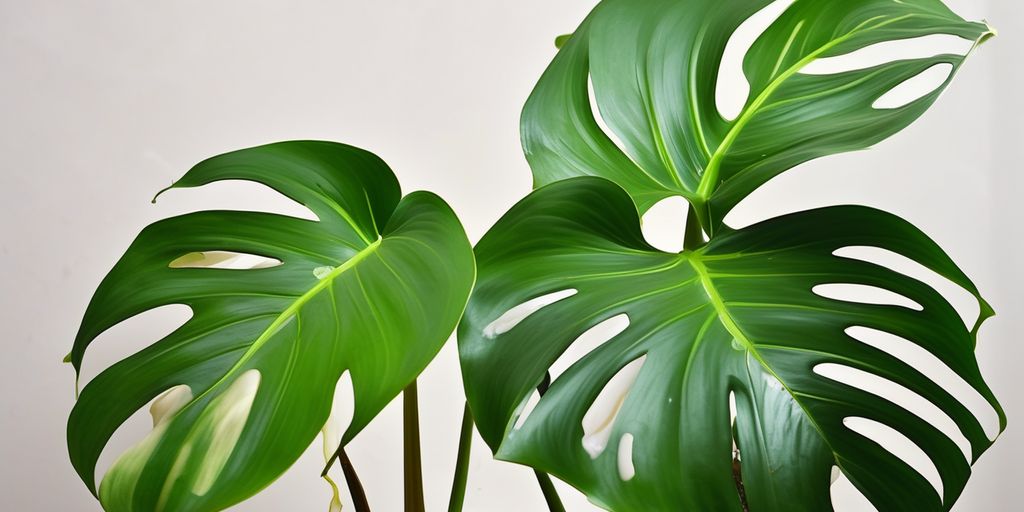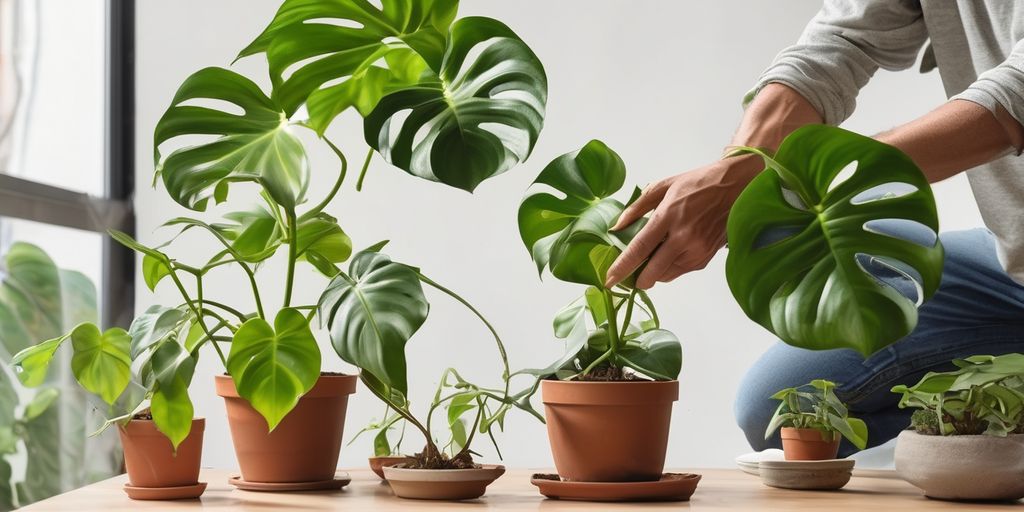The Philodendron Prince of Orange is a vibrant houseplant known for its unique color-changing leaves that transition from orange to green as they mature. Proper care is essential to maintain its bright appearance and promote healthy growth. This article provides an in-depth guide on how to best care for your Philodendron Prince of Orange, covering everything from lighting and watering to soil requirements and pest management.
Contents
- 1 Understanding the Philodendron Prince of Orange
- 2 Optimal Lighting Conditions
- 3 Watering Your Philodendron
- 4 Soil and Fertilization Needs
- 5 Temperature and Humidity Requirements
- 6 Pruning and Maintenance
- 7 Common Pests and Diseases
- 8 Conclusion
- 9 Frequently Asked Questions
- 9.1 How often should I water my Philodendron Prince of Orange?
- 9.2 What is the best type of light for a Philodendron Prince of Orange?
- 9.3 When should I repot my Philodendron Prince of Orange?
- 9.4 What are the signs of overwatering my Philodendron?
- 9.5 How do I know if my Philodendron is getting too much light?
- 9.6 What should I do if I notice pests on my Philodendron Prince of Orange?
Key Takeaways
- Understanding the unique growth and color transition patterns of the Philodendron Prince of Orange is crucial for its care.
- Proper lighting is essential, with bright, indirect light being ideal to prevent leaf burn while encouraging vibrant coloration.
- Regular watering and well-draining soil are key, but be mindful of overwatering which can lead to root rot.
- Maintaining the right temperature and humidity levels will mimic the plant’s natural tropical environment, promoting healthy growth.
- Pruning and keeping an eye out for pests and diseases are important for the longevity and aesthetic of the plant.
Understanding the Philodendron Prince of Orange
Origins and Characteristics
The Philodendron Prince of Orange is a vibrant, ever-changing houseplant known for its unique foliage that shifts in color as it matures. Originating from South America, this plant is a part of the larger Philodendron genus which thrives in tropical environments. The leaves of the Prince of Orange start out a bright orange and gradually change to a deeper green, making it a visually dynamic addition to any indoor space.
Growth Patterns
This philodendron variety exhibits a compact growth habit, making it ideal for indoor spaces with limited area. It grows relatively fast under optimal conditions, with new leaves unfurling from the center of the plant. The growth rate can be influenced by factors such as light, temperature, and humidity. Regular pruning can help maintain its shape and promote more vigorous growth.
Color Changes
One of the most striking features of the Philodendron Prince of Orange is its ability to change color based on maturity and environmental factors. Young leaves are typically a vivid orange or yellow, which gradually morph into shades of green as they age. This dynamic color transformation is not only beautiful but also serves as an indicator of the plant’s health and environmental suitability.
Optimal Lighting Conditions
Amount of Light
Philodendron Prince of Orange thrives in bright, indirect light. Avoid direct sunlight, as it can scorch the leaves, leading to discoloration and damage. A well-lit room with sheer curtains is ideal for diffusing just the right amount of light.
Best Light Exposure
East or west-facing windows are the best spots for your Philodendron Prince of Orange, providing the perfect balance of light throughout the day. If natural light is limited, consider using grow lights to supplement the lack of sunlight.
Signs of Poor Lighting
Poor lighting conditions can severely affect the health of your plant. Look for signs such as:
- Leggy growth
- Smaller leaves than usual
- Dull or fading leaf color
If you notice any of these signs, it’s crucial to adjust the plant’s position or the light source to ensure better health and vibrant foliage.
Watering Your Philodendron
Watering Frequency
Water only when the top inch of soil feels dry to the touch. Over-watering can be detrimental to the Philodendron Prince of Orange, as it prefers to dry out slightly between waterings. During active growth periods in spring and summer, watering may be necessary once a week, while in winter, less frequent watering is required.
Signs of Overwatering
- Yellowing leaves
- Wilting despite wet soil
- Root rot, which may produce a foul smell
Overwatering is a common issue that can lead to serious health problems for your plant. It’s crucial to ensure proper drainage and to adjust your watering schedule based on the season and the plant’s environment.
Signs of Underwatering
- Drooping leaves that appear dry
- Brown, crispy leaf edges
- Slowed growth or stunted leaves
Underwatering can stress the plant, making it more susceptible to pests and diseases. Regularly check the soil moisture and increase watering if the plant shows signs of drought stress.
Soil and Fertilization Needs
Choosing the Right Soil
Selecting the appropriate soil is crucial for the health of your Philodendron Prince of Orange. A well-draining, peat-based potting mix is ideal. This ensures that the roots are in a moist environment, which is essential for their growth, without being waterlogged.
Fertilizer Types and Usage
Philodendrons benefit greatly from regular fertilization, especially during their growing season in spring and summer. Use a balanced, water-soluble fertilizer every 4-6 weeks. Avoid over-fertilization as it can lead to salt buildup and harm the plant.
Repotting Tips
Repotting should be done every 2-3 years to ensure your plant has enough space to grow and to refresh the soil. When repotting, gently remove the plant from its current container, inspect the root system for any signs of rot or disease, and place it in a slightly larger pot with fresh soil. This is a good opportunity to check the overall health of your Philodendron.
Temperature and Humidity Requirements
Ideal Temperature Range
The Philodendron Prince of Orange thrives best in temperatures between 65°F to 80°F (18°C to 27°C). Avoid temperatures below 55°F (13°C) as they can severely hinder the plant’s growth and health.
Humidity Preferences
This plant prefers high humidity levels, ideally between 60% to 80%. Using a humidifier or placing a water tray near the plant can help maintain the desired humidity.
Adjusting Your Home Environment
To create an optimal environment for your Philodendron Prince of Orange, consider these steps:
- Ensure the room is well-insulated to maintain stable temperatures.
- Use a hygrometer to monitor the humidity levels.
- Increase humidity by grouping plants together or using a room humidifier.
Maintaining the right temperature and humidity is crucial for the health and vibrancy of your Philodendron Prince of Orange.
Pruning and Maintenance
When to Prune
Pruning your Philodendron Prince of Orange should be done in the early spring before the growth season begins. This timing allows the plant to heal and use its energy for new growth efficiently. Remove dead or yellowing leaves to encourage healthier growth and maintain the plant’s aesthetic appeal.
Pruning Techniques
Use sharp, clean shears to make precise cuts. Cut close to the main stem to avoid stubs that can attract pests. For shaping, selectively remove leaves to enhance the plant’s natural form. Always prune sparingly to avoid stressing the plant.
Regular Maintenance Tips
- Check for pests during routine maintenance.
- Rotate the plant periodically to ensure even growth.
- Wipe the leaves with a damp cloth to remove dust and boost photosynthesis.
- Ensure the plant is not exposed to drafts or sudden temperature changes.
Regularly inspecting your plant and addressing issues promptly can prevent many common problems and keep your Philodendron Prince of Orange looking vibrant.
Common Pests and Diseases
Identifying Common Pests
Philodendron Prince of Orange can be susceptible to pests such as spider mites, mealybugs, and aphids. Regularly inspect the undersides of leaves and the stem for any signs of these pests. Early detection is crucial for effective management.
Preventing Diseases
Maintaining proper air circulation, adequate light, and not overwatering are key to preventing diseases. Ensure the plant is in well-draining soil to avoid root rot, which is a common issue.
Treatment Options
For pests, use insecticidal soap or neem oil as a safe and effective treatment. For fungal infections, remove affected areas and apply a fungicide. Always test any treatment on a small area first to ensure it does not harm the plant.
Conclusion
Caring for your Philodendron Prince of Orange can be a rewarding experience, bringing vibrant color and life to your indoor spaces. By understanding the specific needs of this unique plant, such as proper lighting, watering, and temperature conditions, you can ensure it thrives. Regular maintenance, including pruning and occasional repotting, will keep your Philodendron healthy and vibrant. Embrace the joy of nurturing this bright and bold plant, and it will surely become a standout feature in your home or office.
Frequently Asked Questions
How often should I water my Philodendron Prince of Orange?
Water your Philodendron Prince of Orange when the top inch of soil feels dry. Typically, this will be once a week, but adjust based on humidity and temperature conditions.
What is the best type of light for a Philodendron Prince of Orange?
This plant thrives in bright, indirect light. Avoid direct sunlight as it can scorch the leaves.
When should I repot my Philodendron Prince of Orange?
Repot your plant every 2-3 years or when it outgrows its pot. Spring or early summer is the best time for repotting.
What are the signs of overwatering my Philodendron?
Signs of overwatering include yellowing leaves, wilting, and root rot. Ensure the pot has good drainage and adjust your watering schedule accordingly.
How do I know if my Philodendron is getting too much light?
If the leaves of your Philodendron are fading or getting scorched spots, it might be getting too much direct sunlight. Move it to a location with indirect light.
What should I do if I notice pests on my Philodendron Prince of Orange?
Treat infestations early with insecticidal soap or neem oil. Regularly check the undersides of leaves and keep the plant clean to prevent pests.




